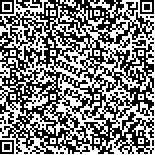下载中心
优秀审稿专家
优秀论文
相关链接
摘要

光学和微波协同遥感反演对于提高农田土壤水分遥感反演精度十分重要。本文采用SMEX02数据集,研究了L波段土壤发射率与地表土壤水分之间的关系,分析了地面植被覆盖对L波段土壤发射率与地表水分之关系的影响规律,推导了以L波段土壤发射率和归一化植被指数NDVI为自变量的土壤水分反演模型。研究表明:L波段土壤发射率与地表土壤水分之间的相关性随NDVI的增加而下降。验证结果表明,本文算法相对常规经验算法,土壤水分反演精度明显提高,H极化条件下,土壤水分的反演精度RMSE由0.0553提高到0.0407,相关系数R2由0.70提高到0.81;V极化条件下,反演精度RMSE由0.0452提高到0.0348,相关系数R2由0.79提高到0.86。
Improving the inversion accuracy of soil moisture by optical and passive microwave remote sensing data is an important task to develop quantitative remote sensing. Based on the Soil Moisture Experiment in 2002 (SMEX02) data set, the relationship between the surface soil moisture and the L-band soil emissivity was analyzed. We also discussed the influence of vegetation on soil microwave radiation and deduced a new soil moisture inversion algorithm that takes L-band soil emissivity and Normalized Difference Vegetation Index (NDVI) as independent variables. The SMEX02 experimental data indicates that the correlation between the soil moisture and the L-band soil emissivity decreases rapidly with the increase in NDVI. The verification result shows that the new algorithm developed in this paper has higher inversion precision than the empirical algorithm for the surface soil moisture covered by crop canopy. In relative terms, the inversion RMSE increased from 0.053 to 0.047 for H polarization and from 0.0452 to 0.0348 for V polarization. The R2 variable increased from 0.70 to 0.81 and from 0.79 to 0.86 for H and V polarization, respectively.

